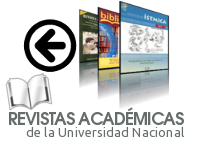The Geometric Representations in an Interactive Geometry Textbook for Primary Education
DOI:
https://doi.org/10.15359/rep.19-1.6Keywords:
geometry, mathematics education, open educational resources, visualization, primary educationAbstract
The project “Eveprim 3.1: An Interactive Geometry Resource for Third-Grade Primary Students” was developed in 2023 by the School of Mathematics at the Costa Rica Institute of Technology (ITCR in Spanish); its objective was to create a digital book covering the skills and content for that level as outlined in the official Costa Rican Mathematics program. In the initial stage of book creation, a thorough analysis of texts from three Costa Rican publishers was conducted. This evaluation was focused on the adequacy of figurative representations of geometric concepts, distractions in structuring and orientation, and the suitability of images of real objects. Considering the identified weaknesses, the digital resource was developed and subsequently validated through expert judgment. The result is an interactive geometry book characterized by the inclusion of figures in non-standardized positions in terms of structure and orientation, and a high percentage of real images, enhancing students’ spatial visualization and comprehension skills. Furthermore, the project encourages learning through dynamic representations by incorporating videos and interactive web applications.
References
Arnal-Brailera, A. y Lancis, Á. (2016). Análisis de progresos y dificultades en tareas de identificación del rombo en Educación Primaria con GeoGebra. Números, 92, 105-116. https://funes.uniandes.edu.co/funes-documentos/analisis-de-progresos-y-dificultades-en-tareas-de-identificacion-del-rombo-en-educacion-primaria-con-geogebra/
Barrantes, M., Fernández, I. y López, M. (2014). La componente visual de la geometría en los libros de textos de secundaria. Premisa, 62, 24-35. http://funes.uniandes.edu.co/22955/
Barrantes, M., López, M. y Fernández, M. (2014). Las representaciones geométricas en los libros de textos utilizados en la Comunidad Autónoma de Extremadura. Campo Abierto, 33(1), 97-116. https://revista-campoabierto.unex.es/index.php/campoabierto/article/view/1553
Barrantes, M., López, M. y Fernández, M. A. (2015). Análisis de las representaciones geométricas en los libros de texto. PNA, 9(2), 107-127. https://doi.org/10.30827/pna.v9i2.6105
Barrantes, M. y Zapata, M. A. (2008). Obstáculos y errores en la enseñanza-aprendizaje de las figuras geométricas. Campo Abierto, 27(1), 55-71. https://revista-campoabierto.unex.es/index.php/campoabierto/article/view/1985
Camargo, L. (2011). El legado de Piaget a la didáctica de la Geometría. Revista Colombiana de Educación, 60, 41-60. https://doi.org/10.17227/01203916.840
Dickson, L., Brown, M. y Gibson, O. (1991). El aprendizaje de las Matemáticas. Editorial Labor.
Falconí-Procel, X. Y. (2021). Modelo de Van Hiele y su utilización para la enseñanza de la geometría. Polo del Conocimiento, 56(6), 2261-2278. https://dialnet.unirioja.es/servlet/articulo?codigo=7926874
Grisales, A. M. (2018). Uso de recursos TIC en la enseñanza de las matemáticas: retos y perspectivas. Entramado, 14(2), 198-214.
Gutiérrez, A. (1996). Visualization in 3-dimensional geometry: In search of a framework. En L. Puig y A. Gutiérrez (Eds.), Proceedings of the 20th International Conference of the P.M.E. https://www.uv.es/gutierre/archivos1/textospdf/Gut96c.pdf
Melero, D. (2021). Enseñanza realista de la geometría en secundaria desde el medio urbano [Tesis de maestría, Universidad a Distancia de Madrid]. Repositorio Institucional de la Universidad a Distancia de Madrid. https://acortar.link/GBSmy3
Montes, M., Climent, N. y Contreras, L. (2022). Construyendo conocimiento especializado en geometría: un experimento de enseñanza en formación inicial de maestro. Revista Aula Abierta, 51(1), 27-36. https://doi.org/10.17811/rifie.51.1.2022.27-36
Moriena, S. y Scaglia, S. (2003). Efectos de las representaciones gráficas estereotipadas en la enseñanza. Educación Matemática, 15(1), 5-19. https://www.revista-educacion-matematica.org.mx/descargas/vol15/vol15-1/vol15-1-1.pdf
Muñoz, P. y Ortega, R. (2014). Visualización en la enseñanza de la geometría en los libros de textos de pre-escolar [Tesis de licenciatura, Universidad de Nariño]. Sistema Institucional de Recursos Digitales. https://sired.udenar.edu.co/1846/1/90065.pdf
Palacio, N., Polo, I. y Fernández, L. (2022). Uso del geoplano para el aprendizaje de conceptos geométricos planos: un estudio de caso con un estudiante con necesidades educativas especiales. Revista Iberoamericana de Educación Matemática, 18(65), 1-20. https://revistaunion.org/index.php/UNION/article/view/816
Segade, M. (2022). El desarrollo de la imagen conceptual del triángulo en el alumnado de Educación Primaria utilizando GeoGebra [Tesis de doctorado, Universidad de Coruña]. Repositorio Institucional de la Universidad de Coruña. https://ruc.udc.es/dspace/bitstream/handle/2183/31191/SegadePampin_MariaElena_TD_2022.pdf?sequence=2&isAllowed=y
Suárez, Z., Monge, C., Solís, R. y Meza, L. (2024). Geometría 3°: Educación Virtual para Estudiantes de Primaria. Proyecto EVEPRIM 3. https://www.tec.ac.cr/geometr%C3%ADa-3
Serrano, Á., Ramírez, R. y Flores, P. (2018). El sentido espacial sobre traslaciones en un libro de texto. Números, 98, 117-131. http://hdl.handle.net/10481/64607
Tall, D. y Vinner, S. (1981). Concept image and concept definition in mathematics with particular reference to limits and continuity. Educational Studies in Mathematics, 12, 151-169. https://doi.org/10.1007/BF00305619
Vinner, S. (1991). The role of definitions in the teaching and lear-ning of mathematics. En D. Tall (Ed.), Advanced Mathematical Thinking (pp. 65-81). Kluwer Academic Publishers. https://doi.org/10.1007/0-306-47203-1_5
Downloads
Published
How to Cite
Issue
Section
License
Copyright (c) 2024 Ensayos Pedagógicos Journal

This work is licensed under a Creative Commons Attribution-NonCommercial-NoDerivatives 4.0 International License.
Ensayos Pedagógicos is subscribed to the Attribution-NonCommertial-NoDerivatives 4.0 International Creative Commons Licence, which allows both authors and readers to freely download, store, copy, and distribute the final approved publisehd version of the manuscript (post-print) as long as this is done without commercial purposes, no derivative works are generated, and the source and author are mentioned. As well, Ensayos Pedagógicos declares that authors will remain the rightful owners of the copyrights of their work in perpetuity.







